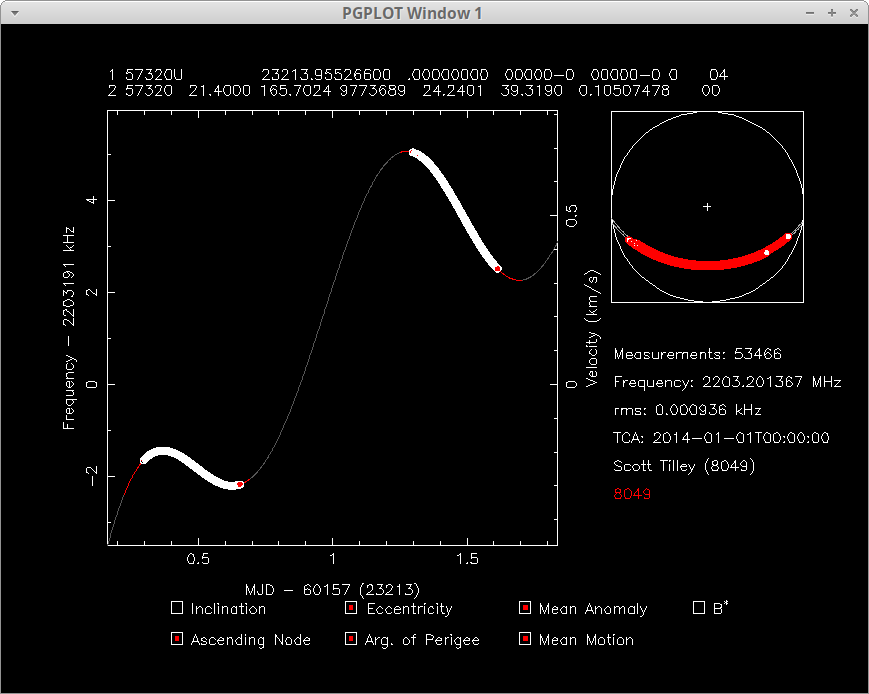No status change in #Chandrayaan2 mission in last 24 hours. No signals reported from the #VikramLander, orbit of #Chandrayaan2 remains stable. No new official reports from #ISRO, speculation in the Indian media as to the cause of the landing anomaly continues.
#NASA's #DSN appears to have stopped active transmission of commands to #VikramLander to stimulate a response. DSN NOW website appears to show stations tasked to #VikramLander but emissions have not been observed.
#Chandrayaan2 orbiter continues to emit strong S-band radio signals. I found an error in my earlier period timings for the orbiter and now my data nicely matches that of @df2mz. It’s safe to say rumours of the orbiter lowering its orbit are not true. 



Tonight, I hope to bring my 3m dish into action and listen for #VikramLander as the declination of the #moon has risen to the point that it has a clear view above my tall trees. Thanks to all that shared good will!
Many questions on @LRO_NASA image timing. The moon needs to rotate for a few more days until LRO's orbital plane is over the landing site. Here's an image showing the landing site and where LRO is now. The moon rotates ~13 degree/day. So 3-4 days needed to get there... 

You can keep up on @LRO_NASA's position at this website. It updates in real time. lroc.sese.asu.edu/about/whereisl…
#DSN24 is reporting emitting 10KW of RF in testing position. It appears tasked with signalling #VikramLander. 

The testing behaviour is consistent with earlier nights where strong emissions where made toward the Moon.
DSN24 appears to be tracking the Moon now.
DSN NOW reports emissions from DSN24!
I'm not hearing the reflected signal yet but the Moon is still in my trees so signal level will be heavily attenuated (reduced).
Here we go, weak detection of the DSN24 reflection! So #NASA is trying again.
#NASA gives it a go again! This is an image of the reflected search signal from California DSN24, not #VikramLander. 

Here's a recording of DSN24's call to #VikramLander.
Here's a video of #Chandrayaan2 orbiter signal. The signal to the left is the Chinese #Queqieo relay satellite at the Earth-Moon L2 point.
This was obtained with the 3m dish antenna.
Here I've connected the dish antenna to the radio I can hear and record videos from. This is #VikramLander's radio frequency. You can see NO radio signals in the passband. If lander was active we would see similar signal levels to those I've shared earlier.
Interestingly I've caught #Chandrayaan2's orbit entirely visible from Earth tonight! The entire plane of the orbit is only visible from Earth twice a month for a few hours. Lucky me! That allows me to hear the radio signal for entire orbit as not blocked by moon. 

Orbital period remains around 7136seconds. About 112Km nominal altitude.
#NASA DSN operator @nascom1 sent an update about #NASA using one of their largest antenna to contact #VikramLander, unfortunately no signals.
https://twitter.com/nascom1/status/1172774485667115008
Another demonstration of #Chandrayaan2 being alive and well is it just locked to DSN 26 at Goldstone. Hence the frequency jump. 

Here's the @LRO_NASA just emerging from the other side of the moon. Near the end of the clip you can hear the rapid change in frequency as it locks to the ground station in New Mexico.
I misspoke LRO was heading behind the moon.
Well folks, its 2am here almost, no signals from #VikramLander. I'll leave the system running and recording. Meanwhile DSN24 continues to transmit to Vikram.... Thanks to all for sharing a night of satellite tracking with me. It's usually a solo gig :-) 

• • •
Missing some Tweet in this thread? You can try to
force a refresh





















